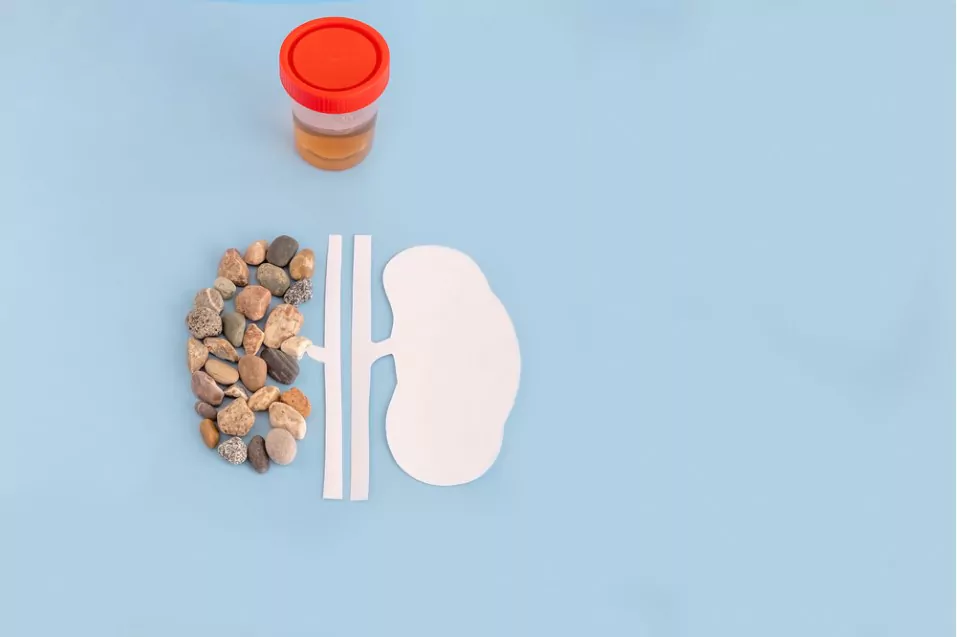How to Pass a 3mm Kidney Stone Naturally: Effective Methods

Kidney stones are small, hard deposits of minerals and salts that form within the kidneys. They are a common health issue, affecting about 10% of people at some point in their lives. If a kidney stone is small enough, such as a 3mm kidney stone, it may pass through the urinary tract without causing much discomfort. However, larger stones can become stuck in the ureter, causing severe pain and discomfort. In this blog, we will discuss the causes of kidney stones, the different types of kidney stones, and how to pass a kidney stone, including a 3mm kidney stone.
1 Causes of Kidney Stones
Kidney stones form when there is an excess of certain substances in the urine, such as calcium, oxalate, and uric acid. These substances can combine to form crystals that grow larger over time, eventually becoming stones. Some of the most common causes of kidney stones include:
Dehydration: When the body is dehydrated, urine becomes more concentrated, increasing the risk of kidney stone formation.
Dietary Factors: A diet high in animal protein, salt, and sugar can increase the risk of kidney stones. Additionally, consuming large amounts of calcium and oxalate-rich foods can also contribute to kidney stone formation.
Family History: If someone in your family has a history of kidney stones, you may be more likely to develop them as well.
Medical Conditions: Certain medical conditions, such as gout, renal tubular acidosis, and hyperparathyroidism, can increase the risk of kidney stone formation.
2 Types of Kidney Stones

There are four main types of kidney stones, each with its own unique causes and characteristics. These include:
Calcium Stones: Calcium stones are the most common type of kidney stone, accounting for 80% of all cases. They can form when there is an excess of calcium in the urine, either due to a diet high in calcium or to medical conditions such as hyperparathyroidism.
Uric Acid Stones: Uric acid stones form when there is too much uric acid in the urine. This can occur due to a diet high in animal protein or due to medical conditions such as gout.
Struvite Stones: Struvite stones form as a result of infections in the urinary tract, such as urinary tract infections (UTIs).
Cystine Stones: Cystine stones are the rarest type of kidney stone and are caused by a genetic disorder that causes excess cystine to be excreted in the urine.
3 Symptoms of Kidney Stones
The symptoms of kidney stones can vary depending on the size and location of the stone. Some of the most common symptoms include:
- Severe pain in the back, side, or lower abdomen.
- Pain or discomfort while urinating.
- Blood in the urine.
- Nausea and vomiting.
- Frequent urination.
- Urinating in small amounts.
- A strong urge to urinate, even when the bladder is empty.
4 How to Pass a Kidney Stone
If you have a kidney stone, including a 3mm kidney stone, that is small enough, it may pass through the urinary tract on its own. However, larger stones may require medical intervention to pass. Some of the most effective methods for passing kidney stones include:
- Drinking Plenty of Fluids: Drinking plenty of fluids, especially water, can help to flush the kidneys and encourage the passage of the stone, including a 3mm kidney stone. Aim to drink at least 2-3 litres of water per day to help increase urine flow and prevent dehydration.
- Pain Management: If you are experiencing severe pain from a kidney stone, including a 3mm kidney stone, over-the-counter pain relievers, such as ibuprofen or acetaminophen, can help to relieve the discomfort. You may also find relief by using a heating pad or taking a warm bath.
- Dietary Changes: Making changes to your diet can help to reduce the risk of future kidney stone formation. This may include reducing your intake of salt, animal protein, and calcium, as well as increasing your intake of water and fibre.
- Medical Procedures: If a kidney stone, including a 3mm kidney stone, is too large to pass on its own, medical procedures may be necessary. These may include:
- Extracorporeal shock wave lithotripsy (ESWL): ESWL is a non-invasive procedure that uses shock waves to break the kidney stone into smaller pieces that can more easily pass through the urinary tract.
- Ureteroscopy: Ureteroscopy is a procedure in which a small scope is inserted through the urethra and into the bladder, allowing the doctor to directly visualise and remove the kidney stone.
- Percutaneous nephrolithotomy: Percutaneous nephrolithotomy is a minimally invasive procedure in which a small incision is made in the back to access the kidney, allowing the doctor to remove the stone.
5 Prevention of Kidney Stones
While there is no guaranteed way to prevent kidney stones, there are several steps you can take to reduce your risk. These include:
- Drinking plenty of fluids: Aim to drink at least 2-3 litres of water per day to help flush the kidneys and prevent the formation of stones.
- Maintaining a healthy diet: A diet low in salt, animal protein, and sugar and high in fibre can help to prevent kidney stones.
- Avoid certain foods: Foods high in calcium and oxalate, such as spinach, chocolate, and nuts, can contribute to kidney stone formation, so it may be helpful to limit or avoid these foods.
- Managing medical conditions: If you have a medical condition that increases your risk of kidney stones, it is important to manage it properly to reduce your risk.
6 Wrapping Up
In conclusion, kidney stones, including a 3mm kidney stone, can be a painful and disruptive health issue, but there are steps you can take to reduce your risk and manage the symptoms if you do develop a stone. By drinking plenty of fluids, making dietary changes, and seeking medical treatment when necessary, you can help to pass a kidney stone and reduce your risk of future stones. If you have concerns about your risk of developing kidney stones, it is important to talk to your doctor, who can help you determine the best course of action for your specific situation.
Community Q&A
About This Article
This article has been viewed 884 times.



